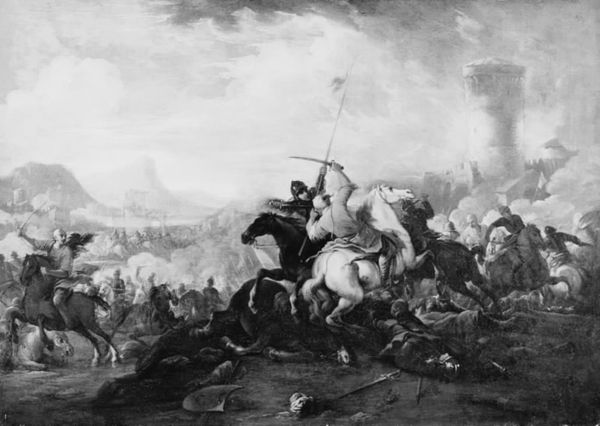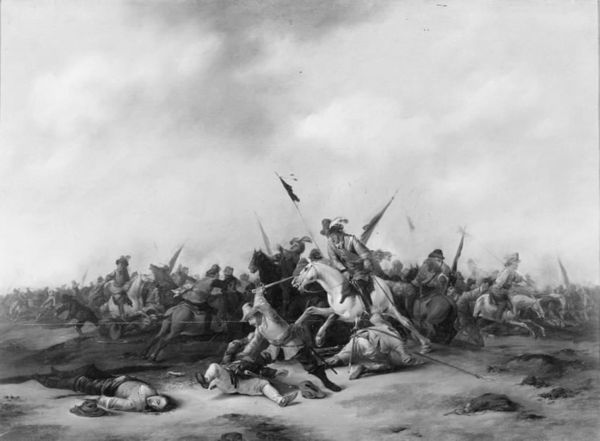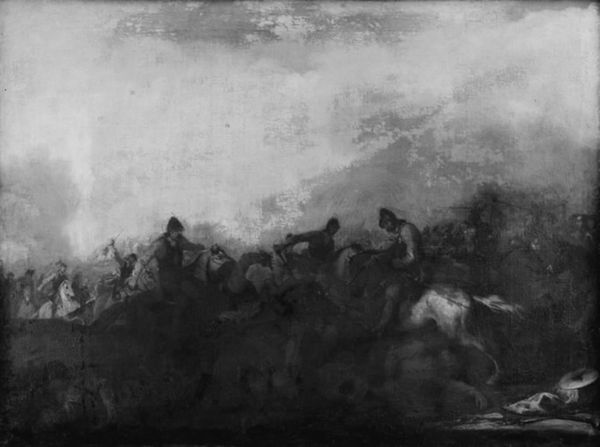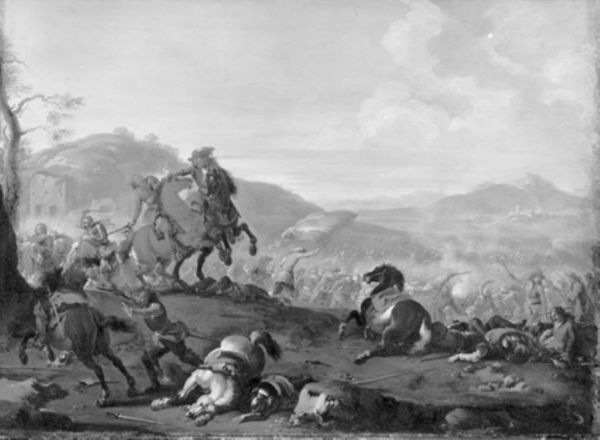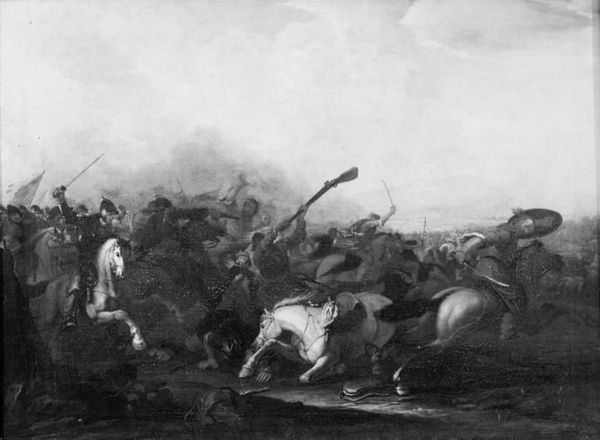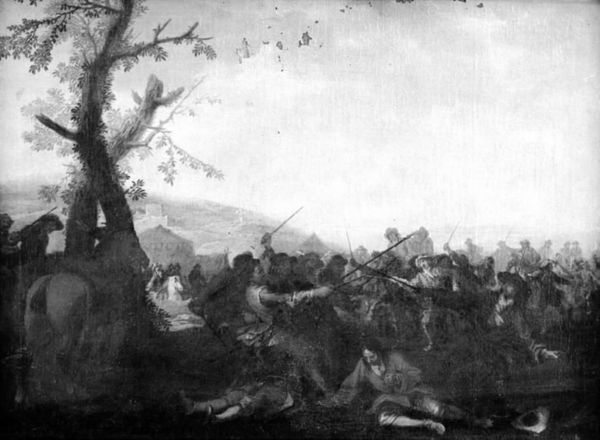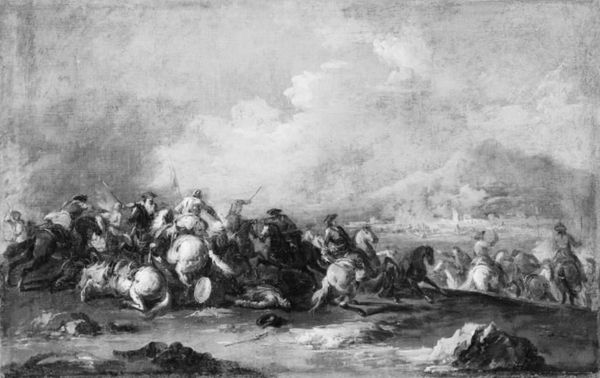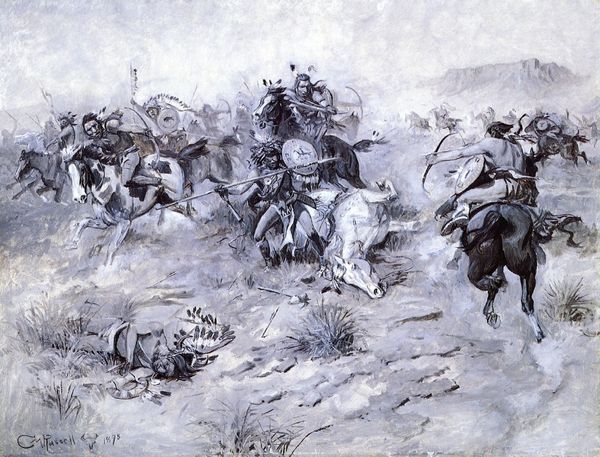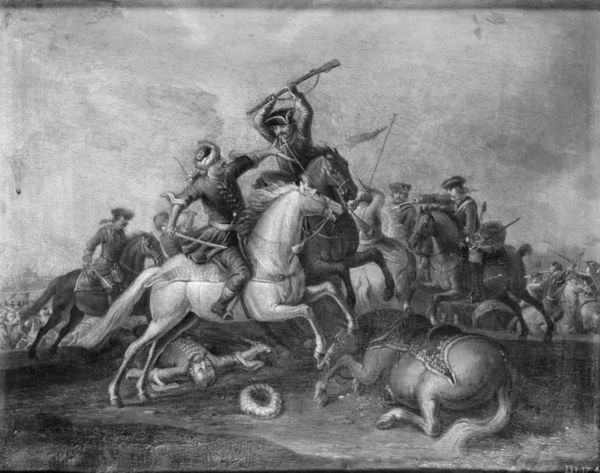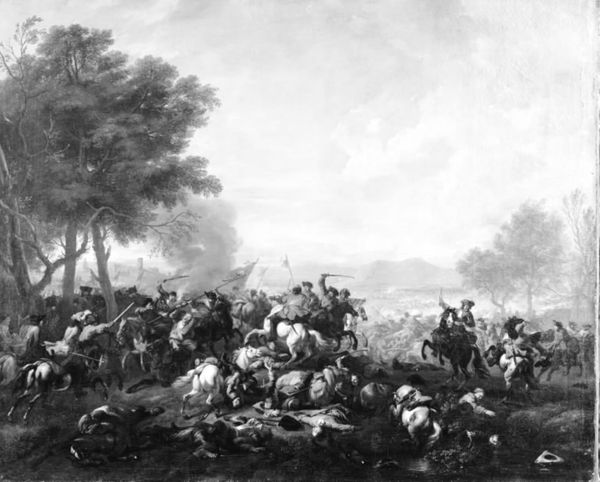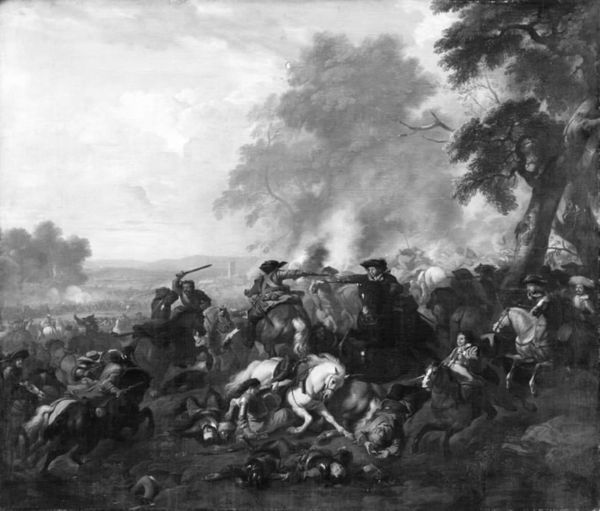
painting
#
baroque
#
painting
#
landscape
#
figuration
#
history-painting
#
monochrome
#
monochrome
Dimensions: 60.2 cm (height) x 81 cm (width) (Netto)
Curator: This dramatic, monochrome work is "Skirmish between Cavalry and Infantry," painted sometime between 1645 and 1700 by Matthias Scheits. It's currently held at the SMK, Statens Museum for Kunst. My first impression is of chaotic energy – almost a dance of destruction frozen in time. Editor: Dance is an interesting choice, but I agree that the monochromatic palette lends itself well to accentuating dynamic tension. It certainly conveys violence with an almost dreamlike distance. Are we looking at a glorified version of warfare here, masking real material violence and social devastation? Curator: I appreciate that question. Looking closely, I see how Scheits' process emphasizes capturing the textures of clothing, the muscular forms of horses, the shine on the armor. Consider the social conditions that commissioned such works – who benefited materially from its production and reception? How does that shape the kind of conflict portrayed? Editor: Exactly. While this artwork fits within a longer art history genre of glorified wars on horseback, that doesn't erase its social responsibility as a work made during various active sociopolitical power imbalances across class, religious, and ethnic fault lines of the time. Who is telling this story, and from what perspective? Curator: And the very act of choosing to represent war, framing that violent interaction through artistic practice. This isn't just brushstrokes; the application of oil paints enacts the same violent process being displayed on the canvas in certain ways. Scheits had the opportunity to explore peace instead, no? What purpose is served in its consumption by those in power during that era, and even now? Editor: It invites reflection. Not just on historical battles, but also the systems of power, race, and gender that war has often perpetuated. Considering its creation alongside emerging capitalist structures in that era makes it all the more politically pointed. Curator: Indeed. Thinking through the cost of war during that time allows viewers now to understand how the same structures endure. Perhaps artworks like this encourage a critical view towards that relationship between resources, labor, and military activity. Editor: It also challenges us to look at contemporary representations of conflict through similarly skeptical lenses. Curator: Precisely, recognizing the power that media and cultural representations have in shaping our perceptions. Editor: Leaving us to interrogate, not glorify, how images of battle and bravery often cloak more complex, nuanced truths.
Comments
No comments
Be the first to comment and join the conversation on the ultimate creative platform.
